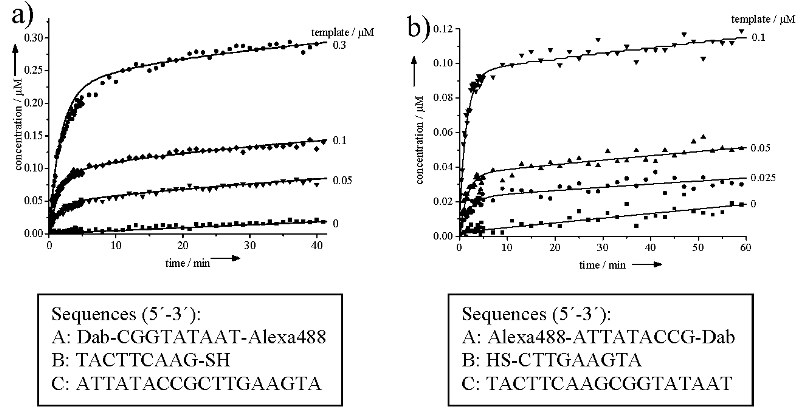Chemical ligation experiments
Kinetic experiments were performed at micromolecular concentrations with a variation of pH-value and initial template concentrations. Experiments show that beside the isosteric structure of the ligation site the main advantages of the system are high reaction rates and its controllability by pH-variation. This allows performing template directed enzyme-like ligation reactions at low concentrations in reasonable time.

Figure 31
The formed intracomplexes either contain reactive disulfides or free thiols and therefore show no contribution to the ligation reaction. Possible side reactions via blunt end ligations were also excluded in template free test experiments by addition of unmodified complementary 9mer sequences. Here no relevant background reaction was observed.
Both reaction cycles were analysed separately in template directed chemical ligation experiments. A template dependent ligation reaction was monitored for both reaction cycles at submicromolar concentrations in a timeframe of minutes. Under the chosen reaction conditions product formation via single strands or blunt end complexes was marginal.

